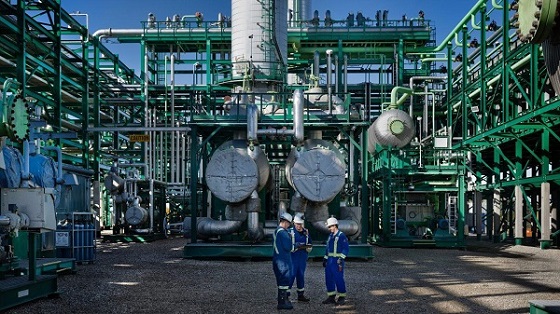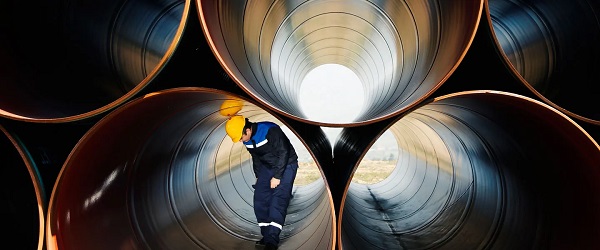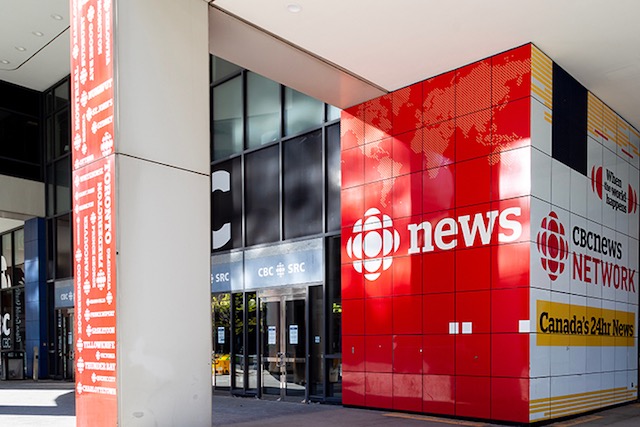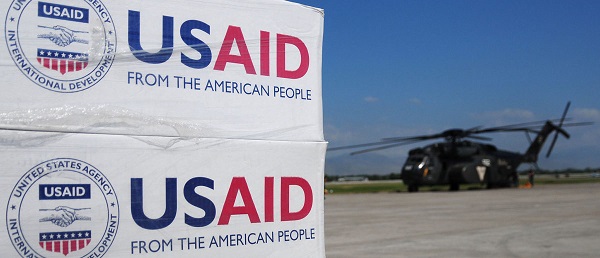Energy
If Canada won’t build new pipelines now, will it ever?

Canada must not allow ideological dogma and indecision to squander a rare chance to lock in our energy sovereignty for good
Canada teeters on the edge, battered by a trade war and Trump’s tariff threats from its once-steady southern ally, yet held back by its own indecision. Trump’s 25 percent tariffs have exposed a brutal truth: Canada’s economy, especially its oil exports, is nearly 100 percent dependent on the U.S.
Voices are crying out to lament the regulatory chaos, ideological zeal, and whispers of “peak oil” that stall progress. If Canada won’t build pipelines when its sovereignty and prosperity are at stake, will it ever? The economics are clear, peak oil is a myth, and the only barriers are self-imposed: dogma, tangled rules, and bad thinking.
The infrastructure Canada can command is immense. Four million barrels of crude flow to the U.S. daily, and Trump’s threats have made that number look even bigger.
The Trans Mountain Expansion (TMX) is proof—linking Alberta to Asia’s markets, with royalties already filling public coffers.
But it’s a lone success. Energy East and Northern Gateway are buried, killed by delays and poor decisions. Private capital is gun-shy, scarred by TMX’s $34 billion price tag, ballooned by a broken system. Why risk billions when the path is a minefield?
The stakes are higher than ever. Forget the claim that oil demand peaks this year at 102 million barrels daily. Experts see a different horizon: Goldman Sachs predicts growth to 2034, OPEC to 2050, BP to 2035—some forecasts topping 80 million barrels.
Enbridge’s Greg Ebel sees “well north” of 100 million by mid-century, driven by Asia’s demand and the developing world’s hunger for energy. Peak oil is a ghost story, not a reality. Canada sits on the third-largest reserves in the world and could dominate the global market, not just feed one neighbour. Pipelines to every coast—east, west, and north—would unlock that future and secure riches for decades.
So what’s holding us back? Ideology, for starters.
Environmental lobbying and influence wrap resource projects in suffocating red tape—emissions caps and endless assessments that kill progress. Years of environmental studies and “net zero” hurdles that no pipeline can clear are choking off bold ideas.
Quebec’s stance has softened under Trump’s pressure, but problematic ideals still linger that blind leaders to reality. The regulatory mess makes it worse.
Today’s system demands a $1 billion bet upfront—engineering, consultations—before a shovel hits the dirt. Companies like TC Energy have been burned before, and others won’t play unless there’s reform. TMX worked because it was a government rescue, but its cost is a deterrent to others.
Then there’s the mess of bad ideas. Government officials will talk about pipelines one day and then express doubts about them the next, leaving a void of leadership. Former prime minister Jean Chrétien very strongly backed a West-East pipeline at the Liberal Party leadership convention.
New leader Mark Carney supports energy links but will not name pipelines, even though public support for them has surged. Four out of five Canadians back coast-to-coast pipelines—but leaders continue to waver.
If not now—when we’re in a trade war and facing annexation—when? Canada’s future is about the infrastructure it controls, not the excuses it clings to. The wealth is waiting, the demand is there, and the barriers are ours to break. Ditch the dogma, fix the rules, and build. Or remain a nation forever poised to rise but never brave enough to do it.
Alberta
Cross-Canada NGL corridor will stretch from B.C. to Ontario

Keyera Corp.’s natural gas liquids facilities in Fort Saskatchewan. Photo courtesy Keyera Corp.
From the Canadian Energy Centre
By Will Gibson
Keyera ‘Canadianizes’ natural gas liquids with $5.15 billion acquisition
Sarnia, Ont., which sits on the southern tip of Lake Huron and peers across the St. Clair River to Michigan, is a crucial energy hub for much of the eastern half of Canada and parts of the United States.
With more than 60 industrial facilities including refineries and chemical plants that produce everything from petroleum, resins, synthetic rubber, plastics, lubricants, paint, cosmetics and food additives in the southwestern Ontario city, Mayor Mike Bradley admits the ongoing dialogue about tariffs with Canada’s southern neighbour hits close to home.
So Bradley welcomed the announcement that Calgary-based Keyera Corp. will acquire the majority of Plains American Pipelines LLP’s Canadian natural gas liquids (NGL) business, creating a cross-Canada NGL corridor that includes a storage hub in Sarnia.
“As a border city, we’ve been on the frontline of the tariff wars, so we support anything that helps enhance Canadian sovereignty and jobs,” says the long-time mayor, who was first elected in 1988.
The assets in Sarnia are a key piece of the $5.15 billion transaction, which will connect natural gas liquids from the growing Montney and Duvernay plays in B.C. and Alberta to markets in central Canada and the eastern U.S. seaboard.
NGLs are hydrocarbons found within natural gas streams including ethane, propane and pentanes. They are important energy sources and used to produce a wide range of everyday items, from plastics and clothing to fuels.
Keyera CEO Dean Setoguchi cast the proposed acquisition as an act of repatriation.
“This transaction brings key NGL infrastructure under Canadian ownership, enhancing domestic energy capabilities and reinforcing Canada’s economic resilience by keeping value and decision-making closer to home,” Setoguchi told analysts in a June 17 call.
“Plains’ portfolio forms a fully integrated cross Canada NGL system connecting Western Canada supply to key demand centres across the Prairie provinces, Ontario and eastern U.S.,” he said.
“The system includes strategic hubs like Empress, Fort Saskatchewan and Sarnia – which provide a reliable source of Canadian NGL supply to extensive fractionation, storage, pipeline and logistics infrastructure.”
Martin King, RBN Energy’s managing director of North America Energy Market Analysis, sees Keyera’s ability to “Canadianize” its NGL infrastructure as improving the company’s growth prospects.
“It allows them to tap into the Duvernay and Montney, which are the fastest growing NGL plays in North America and gives them some key assets throughout the country,” said the Calgary-based analyst.
“The crown assets are probably the straddle plants in Empress, which help strip out the butane, ethane and other liquids for condensate. It also positions them well to serve the eastern half of the country.”
And that’s something welcomed in Sarnia.
“Having a Canadian source for natural gas would be our preference so we see Keyera’s acquisition as strengthening our region as an energy hub,” Bradley said.
“We are optimistic this will be good for our region in the long run.”
The acquisition is expected to close in the first quarter of 2026, pending regulatory approvals.
Meanwhile, the governments of Ontario and Alberta are joining forces to strengthen the economies of both regions, and the country, by advancing major infrastructure projects including pipelines, ports and rail.
A joint feasibility study is expected this year on how to move major private sector-led investments forward.
Business
B.C. premier wants a private pipeline—here’s how you make that happen

From the Fraser Institute
By Julio Mejía and Elmira Aliakbari
At the federal level, the Carney government should scrap several Trudeau-era policies including Bill C-69 (which introduced vague criteria into energy project assessments including the effects on the “intersection of sex and gender with other identity factors”)
The Eby government has left the door (slightly) open to Alberta’s proposed pipeline to the British Columbia’s northern coast. Premier David Eby said he isn’t opposed to a new pipeline that would expand access to Asian markets—but he does not want government to pay for it. That’s a fair condition. But to attract private investment for pipelines and other projects, both the Eby government and the Carney government must reform the regulatory environment.
First, some background.
Trump’s tariffs against Canadian products underscore the risks of heavily relying on the United States as the primary destination for our oil and gas—Canada’s main exports. In 2024, nearly 96 per cent of oil exports and virtually all natural gas exports went to our southern neighbour. Clearly, Canada must diversify our energy export markets. Expanded pipelines to transport oil and gas, mostly produced in the Prairies, to coastal terminals would allow Canada’s energy sector to find new customers in Asia and Europe and become less reliant on the U.S. In fact, following the completion of the Trans Mountain Pipeline expansion between Alberta and B.C. in May 2024, exports to non-U.S. destinations increased by almost 60 per cent.
However, Canada’s uncompetitive regulatory environment continues to create uncertainty and deter investment in the energy sector. According to a 2023 survey of oil and gas investors, 68 per cent of respondents said uncertainty over environmental regulations deters investment in Canada compared to only 41 per cent of respondents for the U.S. And 59 per cent said the cost of regulatory compliance deters investment compared to 42 per cent in the U.S.
When looking at B.C. specifically, investor perceptions are even worse. Nearly 93 per cent of respondents for the province said uncertainty over environmental regulations deters investment while 92 per cent of respondents said uncertainty over protected lands deters investment. Among all Canadian jurisdictions included in the survey, investors said B.C. has the greatest barriers to investment.
How can policymakers help make B.C. more attractive to investment?
At the federal level, the Carney government should scrap several Trudeau-era policies including Bill C-69 (which introduced vague criteria into energy project assessments including the effects on the “intersection of sex and gender with other identity factors”), Bill C-48 (which effectively banned large oil tankers off B.C.’s northern coast, limiting access to Asian markets), and the proposed cap on greenhouse gas (GHG) emissions in the oil and gas sector (which will likely lead to a reduction in oil and gas production, decreasing the need for new infrastructure and, in turn, deterring investment in the energy sector).
At the provincial level, the Eby government should abandon its latest GHG reduction targets, which discourage investment in the energy sector. Indeed, in 2023 provincial regulators rejected a proposal from FortisBC, the province’s main natural gas provider, because it did not align with the Eby government’s emission-reduction targets.
Premier Eby is right—private investment should develop energy infrastructure. But to attract that investment, the province must have clear, predictable and competitive regulations, which balance environmental protection with the need for investment, jobs and widespread prosperity. To make B.C. and Canada a more appealing destination for investment, both federal and provincial governments must remove the regulatory barriers that keep capital away.
-

 Bruce Dowbiggin2 days ago
Bruce Dowbiggin2 days agoThe Covid 19 Disaster: When Do We Get The Apologies?
-

 Crime1 day ago
Crime1 day agoSweeping Boston Indictment Points to Vast Chinese Narco-Smuggling and Illegal Alien Labor Plot via Mexican Border
-

 Alberta2 days ago
Alberta2 days agoAlberta school boards required to meet new standards for school library materials with regard to sexual content
-

 International20 hours ago
International20 hours agoSupport for the Ukraine war continues because no one elected is actually in charge.
-

 Business20 hours ago
Business20 hours agoTrump slaps Brazil with tariffs over social media censorship
-

 Environment1 day ago
Environment1 day agoEPA releases report on chemtrails, climate manipulation
-

 Business23 hours ago
Business23 hours agoCBC six-figure salaries soar
-

 Addictions22 hours ago
Addictions22 hours agoCan addiction be predicted—and prevented?







